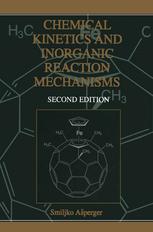

Most ebook files are in PDF format, so you can easily read them using various software such as Foxit Reader or directly on the Google Chrome browser.
Some ebook files are released by publishers in other formats such as .awz, .mobi, .epub, .fb2, etc. You may need to install specific software to read these formats on mobile/PC, such as Calibre.
Please read the tutorial at this link: https://ebookbell.com/faq
We offer FREE conversion to the popular formats you request; however, this may take some time. Therefore, right after payment, please email us, and we will try to provide the service as quickly as possible.
For some exceptional file formats or broken links (if any), please refrain from opening any disputes. Instead, email us first, and we will try to assist within a maximum of 6 hours.
EbookBell Team

4.3
78 reviewsThe serious study of the reaction mechanisms of transition metal com plexes began some five decades ago. Work was initiated in the United States and Great Britain; the pioneers ofthat era were, inalphabetical order, F. Basolo, R. E. Connick, 1. O. Edwards, C. S. Garner, G. P.Haight, W. C. E. Higgision, E.1. King, R. G. Pearson, H. Taube, M.1. Tobe, and R. G. Wilkins.A larger community of research scientists then entered the field, many of them stu dents ofthose just mentioned. Interest spread elsewhere as well, principally to Asia, Canada, and Europe. Before long, the results ofindividual studies were being consolidated into models, many of which traced their origins to the better-established field of mechanistic organic chemistry. For a time this sufficed, but major revisions and new assignments of mechanism became necessary for both ligand sub stitution and oxidation-reduction reactions. Mechanistic inorganic chemistry thus took on a shape of its own. This process has brought us to the present time. Interests have expanded both to include new and more complex species (e.g., metalloproteins) and a wealth of new experimental techniques that have developed mechanisms in ever-finer detail. This is the story the author tells, and in so doing he weaves in the identities of the investigators with the story he has to tell. This makes an enjoyable as well as informative reading.